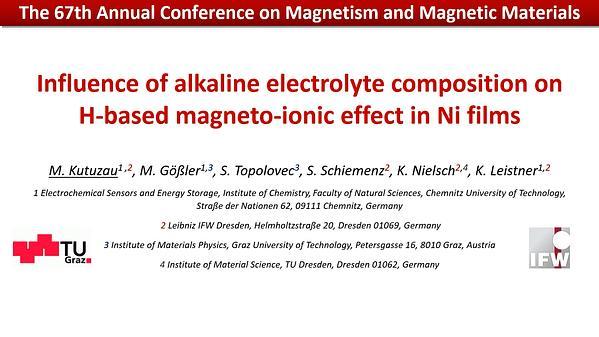Would you like to see your presentation here, made available to a global audience of researchers?
Add your own presentation or have us affordably record your next conference.
The distance between islands must be reduced to increase an areal density (AD) in bit-patterned media recording (BPMR) 1-2, which means both inter-symbol interference (ISI) and inter-track interference (ITI) effects are avoidably increased. Therefore, BPMR system performance is effortlessly degraded 3. In prior work 4, constrained code working with a multilayer perceptron (MLP) decoder in a staggered-array BPMR system was proposed.
However, to get more improvement in the overall system performance of the magnetic recording system, we propose to apply the three-dimensional (3-D) magnetic recording that has double recording layers 5 with the constrained code performing with the MLP decoder. Here, a double recording layer medium is designed as a staggered pattern as shown in Fig. 1. Each layer is arranged as a regular array. Both of them are then arranged in a staggered pattern. The proposed double recording layer not only avoids the significant signal degradation from inter-layer interference (ILI) but also mitigates ISI and ITI effects.
An input sequence, uk∈{±1}, is encoded by LDPC code and the rate-3/5 constrained encoder to obtain two encoded data sequences, xk,0, xk,1 as shown in Fig. 2. The odd, xk,0, and even, xk,1, data sequences are recorded in the upper and lower layers, respectively. A single reader is always positioned between two desirable tracks to retrieve the readback signal, which is then oversampled at time t = kTx/2 to obtain a data sequence, rk, where Tx is a bit period. The 1-D equalizer and 1-D modified-soft output Viterbi algorithm (m-SOVA) are used to equalize and determine a log-likelihood ratio (LLR), λk, respectively. Then, it is decoded and produced the improved LLR values, respectively, with the rate-3/5 decoder and LLR estimator based on MLP, λ"k. Finally, the estimated user bit, ûk, is produced using an LDPC decoder.
Simulation results indicate that, at the same user density (UD), the proposed system (AD = 5 Tb/in2) provides BER performance over the previous system 4.
References
Y. Shiroishi et al., IEEE Trans. Magn., vol. 45, pp. 3816-3822 (2009)
R. L. White, R. M. H. New, and R. F. W. Pease, IEEE Trans. Magn., pp. 990-995 (1997)
P. W. Nutter et al., IEEE Trans. Magn., vol. 41, pp. 3214-3216 (2005)
N. Rueangnetr et al., 19th ECTI-CON 2022, pp. 1-4 (2022)
Y. Nakamura et al., IEEE Trans. Magn., vol. 58, pp. 1-5 (2022)

Fig. 1. Cross-section of head-media geometry for double recording layer medium.

Fig. 2. A code BPMR channel model with the rate-3/5 constrained code.
